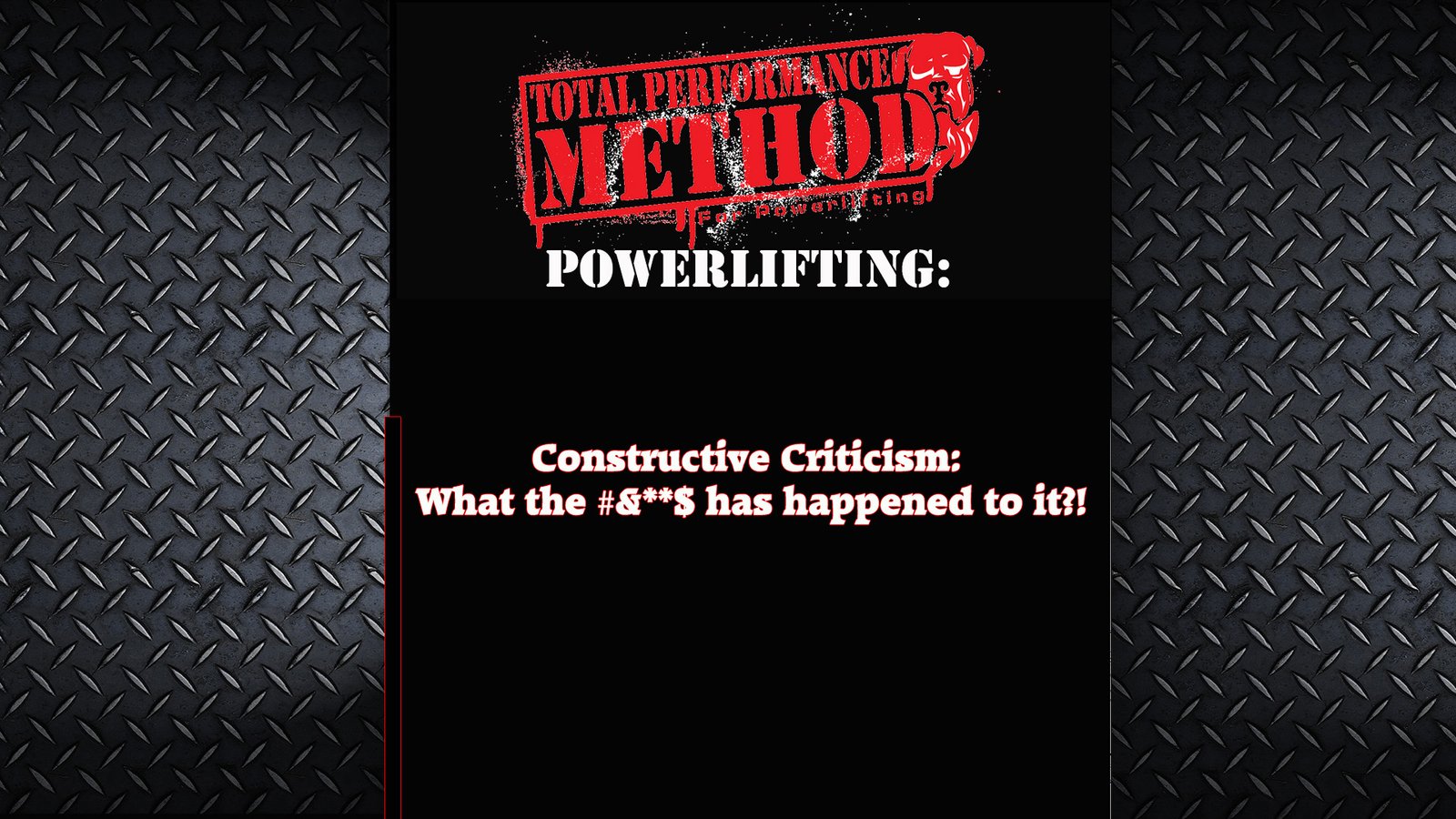I ask a lot in the newsletter if you have any topics that you would like covered and I got a great one this month. I hope you like it.
A very good friend of mine is getting up there in age and he’s pretty banged up, even more than me. He asked me to write about ways to train around injuries, and ways to prevent injury and burnout. He is banged up, not because of years of competing in the strength sports, but from years of ultra-high intensity training and hard core martial arts. This guy is known for going through some of the most grueling Dave Tate style puke inducing workouts you have ever seen. He only has one speed, ludicrous.
My friend is also guilty of doing what he knows. He is always learning and reading, but it seems that he never, until recently did things differently. It was always balls out, 4-6 days a week of high intensity body building style training. Deloads were for pussies. Hell, back in the day, we didn’t even know what a deload was! For those of you who don’t know now, a deload is a period of time, usually a week, where you take it easy. You lift at about 50% of your usual. This is done to prevent injury, burnout and overtraining. A deload period actually allows you to get stronger when done right.
I’ll elaborate on this a little: science backs this idea up with the GAS principle of training. GAS is the General Adaption Syndrome and it means that periods of high intensity must be balanced with periods of low intensity or complete rest to prevent bad mojo from occurring. This is easy to add to your program.

Not this kind of GAS!
You should program your workouts in blocks. These can be as short as 3-4 weeks or as long as multi-year. I suggest knowing what you want to accomplish long term (long term goal) and then deciding on what type of training you need to do to get there, and then programming in short blocks of 4-12 weeks (short term goal), and then re-evaluating every few months and making changes as necessary. A deload period every 4th or 5th week is a great idea. Plan your deloads and implement them appropriately. A simple deload plan is to take the main lifts that you do and work them for 3-5 sets at about 50% of the max weight you used in the last block. You should also keep assistance work to a minimum. You will actually go back into the next cycle fresher and stronger, not only physically, but mentally.
I’d like to touch on another issue for you. I mentioned that my friend trained like a bodybuilder for most of his life. This was partly because he is a lot older than most of you and back in the day it was all we knew. The abundance of training information that we have now just wasn’t available then. What was available was mostly crap in magazines. (Note: the magazine industry has come a long way in the past few years with great information thanks to guys like Rob Fitzgerald and Sean Hyson). The stuff in the magazines wasn’t even written by the bodybuilder most of the time. It was written by a staff writer who may or may not have known his ass from his elbow in regards to training. This is the reason that for years guys like Dave Tate, Alwyn Cosgrove, Jay Ferrugia and me have been screaming in our articles and newsletters about the truth. The amount of misinformation and junk science that was out there was absurd. I digress.

Training like a bodybuilder has its benefits it you want to look like a bodybuilder. It’s also better than doing nothing. It is not at all good for preventing injury, for sports performance or for any of the millions of other reasons that you are in the gym. It is also, most of the time too high in intensity and focused on small movements. Bodybuilding style training also focuses on hitting the same areas over and over without letting them rest. This is a recipe for overuse and degenerative injury when taken to extreme.
Better ways have been found for those who are looking for the health and fitness benefits of exercise/strength training and never want to set foot on a bodybuilding stage. I’ll address those in next month’s installment of this article. Keep reading and I’ll give you ways to train so you don’t get inured, what to do when you are, and how lift forever.







Leave A Comment